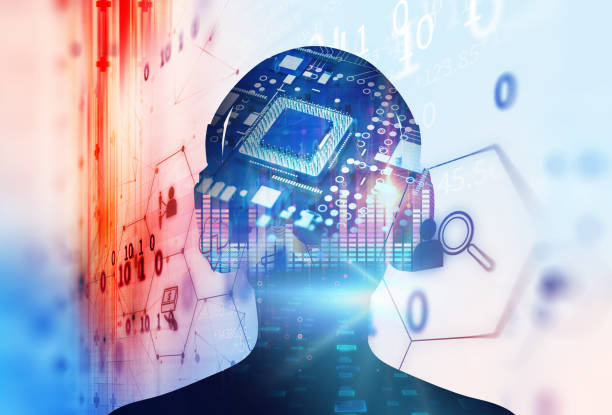What is Artificial Intelligence? Definitions and Basic Concepts

What is Artificial Intelligence? Definitions and Basic Concepts
Artificial Intelligence (AI) is a branch of computer science that deals with building machines and systems capable of performing tasks that typically require human intelligence.
These tasks include learning, reasoning, problem-solving, natural language understanding, pattern recognition, and machine vision.
In other words, #Artificial_Intelligence tries to design machines in such a way that they can think, learn, and act like humans.
This field is very broad and includes various techniques and approaches.
Understanding the basic concepts of artificial intelligence is essential for entering this field.
Some of these concepts include: machine learning algorithms, artificial neural networks, natural language processing, and robotics.
Each of these concepts plays an important role in the development and applications of artificial intelligence.
Artificial intelligence can be divided into two main categories: Narrow AI and General AI.
Narrow AI is designed to perform specific tasks and performs very well in that task, but is not capable of performing other tasks.
For example, a facial recognition system or a search engine.
In contrast, General AI is capable of understanding, learning, and doing anything that a human can do.
Achieving strong AI is still a major challenge in this field.
For more information about artificial intelligence, you can visit this Wikipedia link.
Are you tired of losing business opportunities due to not having a professional corporate website?
Rasaweb helps you by designing a professional corporate website:
✅ Build a powerful and reliable image of your brand
✅ Turn website visitors into loyal customers
⚡ Get a free consultation now!
History of Artificial Intelligence from the Beginning to Today
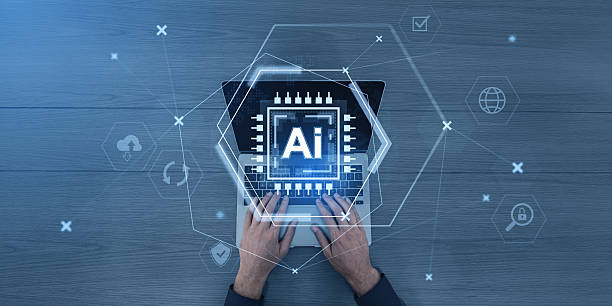
History of Artificial Intelligence from the Beginning to Today
The history of Artificial Intelligence dates back to the 1950s, when researchers began exploring the possibility of building intelligent machines.
In 1956, a conference was held in Dartmouth that is recognized as the official starting point of artificial intelligence research.
At this conference, prominent researchers such as John McCarthy, Marvin Minsky, and Claude Shannon gathered to explore issues related to artificial intelligence.
In the 1960s and 1970s, significant advances were made in areas such as automated reasoning and natural language processing.
However, due to hardware and software limitations, these advances were unable to fully achieve their goals.
This period is known as the “AI winter” because research budgets were reduced and hopes for the future of AI faded.
In the 1980s and 1990s, with the emergence of artificial neural networks and machine learning algorithms, Artificial Intelligence was revitalized.
The development of more powerful computers and access to more data made it possible to train more complex models.
During this period, we witnessed successes in areas such as face recognition, speech recognition, and computer games.
For example, IBM’s Deep Blue was able to defeat Garry Kasparov, the world chess champion, in 1997.
Today, Artificial Intelligence has become one of the most important and widely used technologies in the world.
Recent advances in deep learning and natural language processing have made it possible to build systems capable of performing tasks that seemed impossible just a few years ago.
For example, speech recognition systems like Siri and Alexa and machine translation systems like Google Translate are among these advances.
Applications of Artificial Intelligence in Various Industries
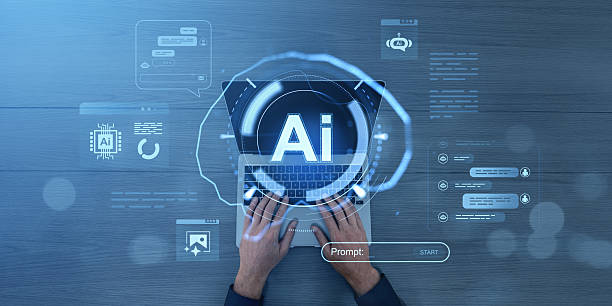
Applications of Artificial Intelligence in Various Industries
Artificial Intelligence has extensive applications in various industries and significantly helps improve efficiency and increase productivity.
In the medical industry, artificial intelligence is used for disease diagnosis, drug development, and the provision of personalized healthcare.
Intelligent systems can analyze medical images and identify patterns that are not detectable to doctors.
Also, surgical robots can perform surgery with greater precision and reduce the risk of error.
In the financial industry, Artificial Intelligence is used for fraud detection, risk management, and the provision of personalized financial services.
Machine learning algorithms can identify unusual patterns in financial transactions and prevent fraud from occurring.
Also, intelligent systems can help customers manage investments and plan their finances.
In the manufacturing industry, Artificial Intelligence is used to optimize production processes, control quality, and predict equipment failure.
Intelligent robots can perform repetitive and dangerous tasks and reduce human errors.
Also, intelligent systems can analyze sensor data and identify patterns that indicate potential equipment failure.
In the transportation industry, Artificial Intelligence is used to develop self-driving cars, optimize routes, and manage traffic.
Self-driving cars can move safely and efficiently on roads without the need for a human driver.
Also, intelligent systems can analyze traffic data and suggest optimal routes to reduce traffic and air pollution.
In the education industry, Artificial Intelligence is used to provide personalized education, assess student performance, and develop educational content.
Intelligent systems can identify the educational needs of each student and provide appropriate educational content.
Also, intelligent systems can help teachers assess student performance and provide constructive feedback.
| Industry | Applications |
|---|---|
| Medical | Disease diagnosis, drug development, personalized healthcare |
| Financial | Fraud detection, risk management, personalized financial services |
| Manufacturing | Optimization of production processes, quality control, failure prediction |
| Transportation | Self-driving cars, route optimization, traffic management |
| Education | Personalized education, student performance evaluation |
Machine Learning is a Subset of Artificial Intelligence

Machine Learning is a Subset of Artificial Intelligence
Machine Learning (ML) is one of the most important subsets of Artificial Intelligence, which allows machines to learn from data without explicit programming.
In fact, machine learning gives machines the ability to identify patterns and hidden relationships by analyzing data and make decisions or predictions based on them.
This process involves training mathematical models using data so that they can perform better in the future with new data.
There are different types of machine learning algorithms, each suitable for a specific type of problem.
Some of these algorithms include: Supervised Learning, Unsupervised Learning, and Reinforcement Learning.
In supervised learning, the model is trained using labeled data, meaning that each data has a specific output.
In unsupervised learning, the model is trained using unlabeled data, and the goal is to discover hidden patterns and structures in the data.
In reinforcement learning, the model learns by interacting with the environment and makes decisions based on rewards and penalties.
The applications of machine learning are very broad and include areas such as face recognition, speech recognition, market forecasting, product and service recommendations, and fraud detection.
For example, product recommendation systems in online stores use machine learning algorithms to analyze user behavior and provide appropriate suggestions.
For more information about machine learning, you can visit this specialized website.
Are you tired of your online store not being able to generate as much revenue as its potential? Rasaweb, a specialist in designing professional online store sites, will solve this problem forever!
✅ Increased sales rate and revenue
✅ High loading speed and unparalleled user experience
⚡ Get a free online store website design consultation
Deep Learning and Neural Networks
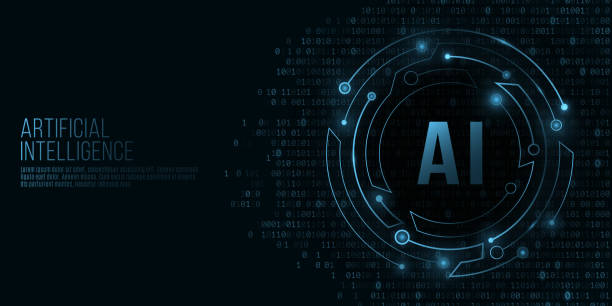
Deep Learning and Neural Networks
Deep Learning (DL) is a subset of machine learning that uses artificial neural networks with multiple (deep) layers to analyze data.
These networks are capable of learning complex and abstract patterns in the data and perform very well in areas such as image recognition, natural language processing, and speech recognition.
Deep neural networks are composed of different layers, each layer responsible for extracting specific features from the data.
For example, in a neural network for image recognition, the initial layers may recognize features such as edges and corners, while the later layers recognize more complex features such as facial components or objects.
One of the most important advantages of deep learning is that it can automatically extract important features from the data without the need for feature engineering by humans.
This makes deep learning very suitable for problems that have complex and high-volume data.
There are different neural networks, each designed for a specific type of problem.
Some of these networks include: Convolutional Neural Networks (CNNs) for image recognition, Recurrent Neural Networks (RNNs) for natural language processing, and Generative Adversarial Networks (GANs) for generating new images and data.
Deep learning has made significant progress in recent years and has provided better performance than traditional machine learning methods in many applications.
For example, deep learning-based image recognition systems can identify objects and people in images with very high accuracy.
Natural Language Processing (NLP) and Human-Machine Interaction

Natural Language Processing (NLP) and Human-Machine Interaction
Natural Language Processing (NLP) is a branch of Artificial Intelligence that allows machines to understand, interpret, and generate human language.
The goal of NLP is for machines to be able to communicate with humans in natural language and perform tasks such as machine translation, sentiment analysis, text summarization, and answering questions.
NLP uses various techniques such as machine learning, deep learning, and linguistic rules to analyze and process human language.
One of the most important applications of NLP is the development of human-machine interaction systems.
These systems allow users to communicate with machines using natural language and give them their commands.
Examples of these systems include: voice assistants like Siri and Alexa, chatbots, and machine translation systems.
Machine translation is another important application of NLP that allows machines to translate texts from one language to another.
Modern machine translation systems use deep neural networks to translate texts and have excellent performance in translating different languages.
Sentiment analysis is also one of the applications of NLP that allows machines to detect the emotions in texts.
This technique is used to analyze customer opinions on social networks and review user feedback about products and services.
Text summarization is another application of NLP that allows machines to convert long texts into short and useful summaries.
This technique is used to summarize news articles, reports, and other documents.
| NLP Application | Description |
|---|---|
| Voice Assistants | Siri, Alexa |
| Machine Translation | Google Translate |
| Sentiment Analysis | Analyzing Customer Opinions |
| Text Summarization | Summarizing News Articles |
Challenges and Limitations of Artificial Intelligence
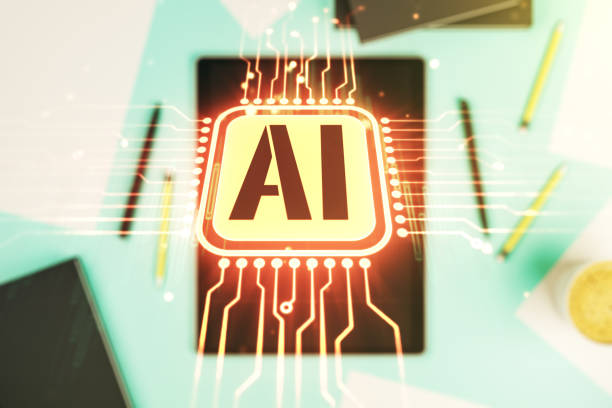
Challenges and Limitations of Artificial Intelligence
Artificial Intelligence, despite its impressive advances, still faces significant challenges and limitations.
One of the most important challenges is the need for large and high-quality data to train machine learning models.
Machine learning models need a large amount of labeled data to achieve good performance, which can be time-consuming and costly to collect and prepare.
Also, the quality of the data is very important, and incorrect or incomplete data can lead to poor model performance.
Another challenge is the interpretability of Artificial Intelligence models.
Many deep learning models, such as deep neural networks, are known as “black boxes” because their internal workings are not understandable to humans.
This can create problems in areas such as medicine and law because the decisions made by these models are not explainable and justifiable.
Ethical issues are also one of the important challenges of Artificial Intelligence.
The use of artificial intelligence can lead to discrimination and inequality, especially if models are trained using unfair data.
Also, there are concerns about the privacy and security of data because Artificial Intelligence systems are designed to collect and analyze users’ personal data.
Hardware limitations are another challenge for Artificial Intelligence.
Training deep learning models requires a lot of processing power and may require the use of expensive hardware such as graphics processing units (GPUs).
The Future of Artificial Intelligence and Its Impact on Human Life
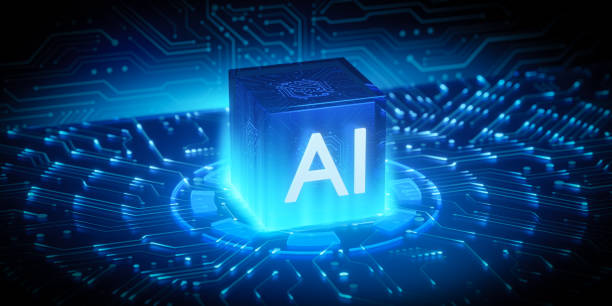
The Future of Artificial Intelligence and Its Impact on Human Life
The future of Artificial Intelligence is very bright and full of new opportunities.
Continuous advances in machine learning, deep learning, and natural language processing enable the construction of smarter and more efficient systems.
It is expected that in the future, Artificial Intelligence will play a more important role in people’s daily lives and will create significant changes in various fields such as medicine, education, transportation, and manufacturing.
In the medical industry, Artificial Intelligence can help diagnose diseases more accurately and quickly, develop new drugs, and provide personalized healthcare.
Intelligent systems can analyze medical images and identify patterns that are not detectable to doctors.
Also, surgical robots can perform surgery with greater precision and reduce the risk of error.
In the education industry, Artificial Intelligence can help provide personalized education, assess student performance, and develop educational content.
Intelligent systems can identify the educational needs of each student and provide appropriate educational content.
Also, intelligent systems can help teachers assess student performance and provide constructive feedback.
In the transportation industry, Artificial Intelligence can help develop self-driving cars, optimize routes, and manage traffic.
Self-driving cars can move safely and efficiently on roads without the need for a human driver.
Also, intelligent systems can analyze traffic data and suggest optimal routes to reduce traffic and air pollution.
However, the widespread use of Artificial Intelligence can also bring challenges.
One of the most important challenges is the impact of Artificial Intelligence on the labor market.
It is expected that with the automation of tasks, many jobs will be lost and there will be a need for new training and skills for workers.
Also, there are concerns about the privacy and security of data because Artificial Intelligence systems are designed to collect and analyze users’ personal data.
Is your online store ready to attract maximum customers and sell more? Rasaweb transforms your online business with modern and efficient online store website design.
✅ Increased speed and improved SEO
✅ Excellent user experience on mobile and desktop⚡ Get a free online store website design consultation from Rasaweb!
Introducing and Reviewing Artificial Intelligence Development Tools
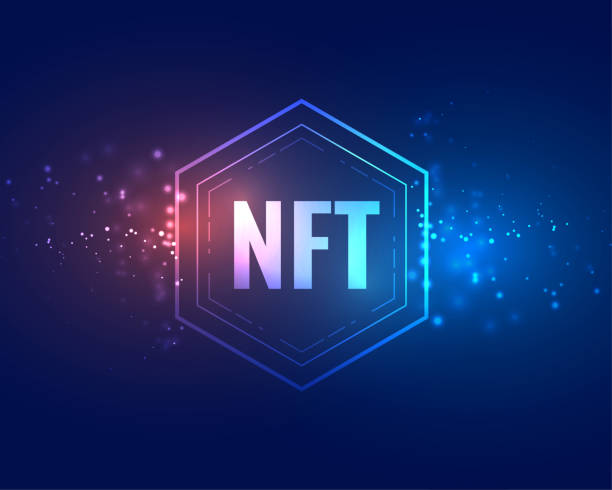
Introducing and Reviewing Artificial Intelligence Development Tools
For the development of Artificial Intelligence systems, there are various tools and frameworks, each with its own features and capabilities.
Some of the most important of these tools are:
- TensorFlow is an open-source machine learning framework developed by Google.
TensorFlow is one of the most popular and powerful machine learning frameworks and supports a wide range of algorithms and models. - PyTorch is an open-source machine learning framework developed by Facebook.
PyTorch is very popular among researchers and developers due to its flexibility and ease of use. - Keras is a high-level library for building neural networks that runs on TensorFlow, PyTorch, and other machine learning frameworks.
Keras is very suitable for getting started with deep learning due to its simplicity and ease of use. - Scikit-learn is a Python library for machine learning that includes various algorithms such as regression, classification, clustering, and dimensionality reduction.
Scikit-learn is very suitable for traditional machine learning problems. - NLTK is a Python library for natural language processing that includes tools for tokenization, stemming, parsing, sentiment analysis, and other NLP tasks.
In addition to these tools, cloud platforms such as Google Cloud AI Platform, Amazon SageMaker, and Microsoft Azure Machine Learning also provide extensive facilities for developing and deploying Artificial Intelligence systems.
These platforms include tools for data management, model training, and deployment in operational environments.
How to Learn Artificial Intelligence? Learning Path and Educational Resources

How to Learn Artificial Intelligence? Learning Path and Educational Resources
Learning Artificial Intelligence can be a challenging but very attractive and rewarding process.
To begin, it is best to become familiar with the basic concepts of mathematics and computer science, such as linear algebra, differential and integral calculus, probability and statistics, and algorithms and data structures.
These basic concepts are necessary for understanding machine learning algorithms and neural networks.
After getting familiar with the basic concepts, you can start learning machine learning algorithms.
For this purpose, you can use online courses, books, and scientific articles.
Some of the popular online courses include: Andrew Ng’s machine learning courses on Coursera, deep learning courses on Udacity, and machine learning courses on edX.
Also, well-known books such as “Pattern Recognition and Machine Learning” by Christopher Bishop and “The Elements of Statistical Learning” by Trevor Hastie et al. are excellent resources for learning machine learning algorithms.
After learning the algorithms, you can start working with machine learning frameworks and libraries such as TensorFlow, PyTorch, Keras, and Scikit-learn.
These frameworks and libraries provide powerful tools for building and training machine learning models.
To gain more mastery over Artificial Intelligence, you can participate in practical projects and solve real problems.
This will help you apply theoretical concepts in practice and gain experience.
Also, you can participate in machine learning competitions such as Kaggle and compete with other Artificial Intelligence specialists.
There are many online and offline educational resources for learning Artificial Intelligence.
Some of these resources include: educational websites, blogs, scientific articles, conferences, and training workshops.
Also, you can use social networks and online forums to connect with other Artificial Intelligence specialists and share your knowledge and experiences.
FAQ
| Question | Answer |
|---|---|
| 1. What is Artificial Intelligence (AI)? | It is a branch of computer science that aims to create machines capable of simulating human intelligence and performing tasks that require human thinking, such as learning, problem-solving, and decision-making. |
| 2. What are the main types of Artificial Intelligence? | It can be classified into Narrow AI, which focuses on a specific task, General AI, which possesses comprehensive human capabilities, and Super AI, which exceeds human intelligence. |
| 3. Mention some common applications of Artificial Intelligence in our daily lives. | They include voice assistants (such as Siri and Alexa), recommendation systems (such as Netflix and Amazon), self-driving cars, facial recognition systems, and spam filters. |
| 4. What is the difference between Artificial Intelligence and Machine Learning (Machine Learning)? | Artificial Intelligence is the broader concept of creating intelligent machines, while Machine Learning is a subset of Artificial Intelligence that focuses on enabling systems to learn from data without explicit programming. |
| 5. What is Deep Learning? | It is a subset of machine learning that uses multilayer artificial neural networks (deep neural networks) to process data and discover complex patterns, and it is used in image and speech recognition. |
| 6. What are the main benefits of Artificial Intelligence? | Improving efficiency and productivity, automating repetitive tasks, making better decisions based on big data analysis, and developing solutions to complex problems in fields such as medicine and science. |
| 7. What are the main challenges facing the development and deployment of Artificial Intelligence? | They include the need for massive amounts of high-quality data, privacy and security issues, bias in data and algorithms, and high development and maintenance costs. |
| 8. Does Artificial Intelligence raise ethical or social concerns? | Yes, it raises concerns about privacy, algorithmic bias, job loss due to automation, responsibility for errors committed by intelligent systems, and the need for a regulatory framework. |
| 9. How can Artificial Intelligence affect the future of the labor market? | It can lead to the automation of some routine jobs, but it will also create new jobs that require advanced skills in the development, operation, and maintenance of Artificial Intelligence systems. |
| 10. What are some modern or promising technologies in the field of Artificial Intelligence? | They include advanced natural language processing (NLP) (such as large language models like ChatGPT), computer vision, robotics, and generative AI. |
And other services of Rasa Web Advertising Agency in the field of advertising
Intelligent link building: Designed for businesses looking to manage campaigns through Google Ads management.
Intelligent sales automation: Professional optimization to increase sales using attractive user interface design.
Intelligent data analysis: Professional optimization for user interaction using attractive user interface design.
Intelligent SEO: An exclusive service for growth to improve SEO ranking based on marketing automation.
Intelligent brand identity: Designed for businesses looking to attract customers through marketing automation.
And more than hundreds of other services in the field of internet advertising, advertising consulting, and organizational solutions
Internet advertising | Advertising strategy | Advertorial
Resources
What is Artificial Intelligence?
,How does Artificial Intelligence work?
,A Simple Explanation of Artificial Intelligence
,Artificial Intelligence Definition
? Are you ready to transform your business in the digital world? Rasaweb Digital Marketing Agency, with its expertise in professional website design and SEO, offers innovative solutions for your growth and visibility.
📍 Tehran, Mirdamad Street, next to the Central Bank, South Kazerun Alley, Ramin Alley No. 6

